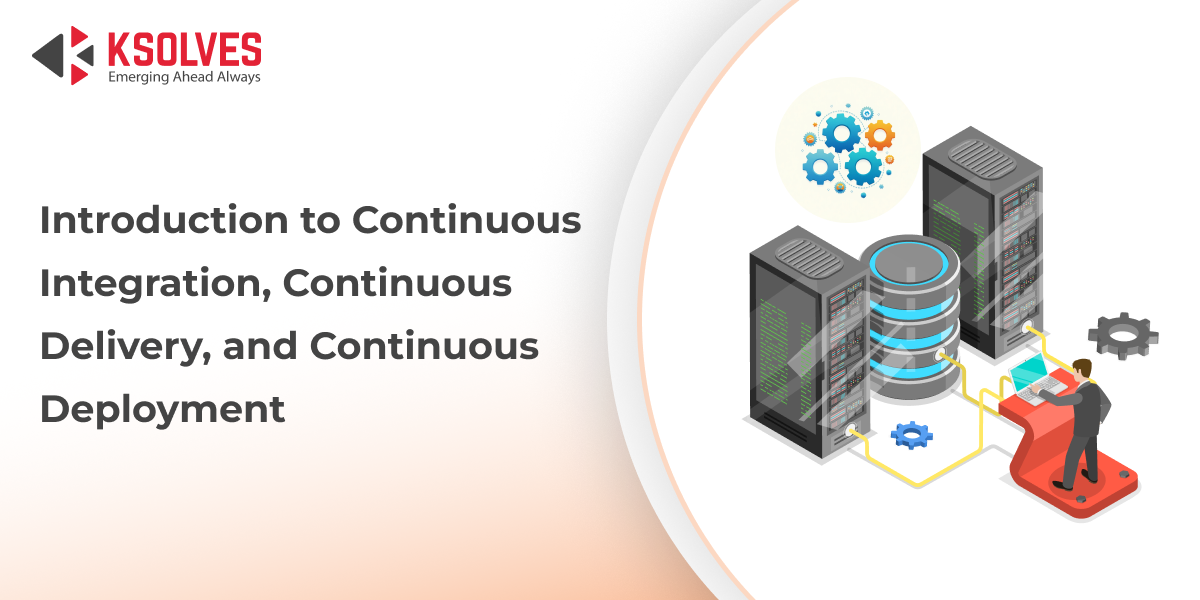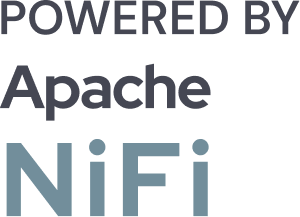What is CI/CD? Know the Differences Between CI and CD
![]()

Today, organizations strive to release new features, fix bugs, and improve software at a rapid pace without compromising quality. This is where the role of CI/CD comes into play. CI/CD stands for Continuous Integration and Continuous Delivery or Continuous Deployment.
CI/CD is a modern approach to software development that automates the integration, testing, and deployment of code, ensuring that software is always in a release-ready state. By embracing CI/CD, businesses can reduce errors, improve collaboration, and deliver high-quality software faster than with traditional development processes.
Let’s explore what CI/CD is and how it benefits businesses in this blog.
What is CI/CD?
CI/CD is a set of software engineering practices that automate the software development lifecycle (SDLC), enabling teams to deliver high-quality software efficiently. The goal is to reduce manual effort, detect issues early, and provide frequent, reliable software updates.
CI/CD consists of three key components:
1️. Continuous Integration (CI): Developers frequently merge code into a shared repository, triggering automated tests to catch errors early.
2️. Continuous Delivery (CD): The application is always kept in a deployable state, allowing teams to release software updates with minimal effort.
3️. Continuous Deployment (CD): Every validated change is automatically deployed to production without manual intervention.
While Continuous Integration and Continuous Delivery are widely adopted, Continuous Deployment is used by companies that require rapid updates and have strong automated testing processes.
What is Continuous Integration (CI)?
In Continuous Integration (CI), developers frequently merge their code changes into a central repository. Automated tests run on each code change to identify errors early in the development cycle.
Key aspects of CI
- Developers commit code multiple times a day.
- Each commit triggers an automated build and test process.
- Immediate feedback helps developers fix issues quickly.
- Encourages collaboration and reduces integration conflicts.
Why CI?
- Detects bugs early, reducing debugging time.
- Ensures that all code changes are tested before integration.
- Improves team collaboration by minimizing conflicts in code.
- Reduces the cost of fixing defects later in development.
What is Continuous Delivery (CD)?
Continuous Delivery (CD) builds upon Continuous Integration by ensuring that software is always in a deployable state. Code changes that pass the automated tests are automatically prepared for release, but a manual approval step is typically required before deployment to production.
Key aspects of continuous delivery
- Every successful build is deployable at any time.
- Code goes through automated testing and security checks.
- Requires a manual approval step before production deployment.
- Reduces the time and effort needed for releases.
Why Continuous Delivery?
- Accelerates software releases by automating deployment pipelines.
- Reduces the risk of deployment failures through consistent testing.
- Enables faster feedback loops, improving software quality.
- Simplifies rollback processes in case of issues.
What is Continuous Deployment (CD)?
Continuous Deployment takes Continuous Delivery one step further by automatically deploying every validated code change to production, without requiring manual approval. This allows for rapid software updates and is commonly used by companies that release multiple updates per day.
Key aspects of Continuous Deployment
- Code changes that pass all tests are deployed automatically.
- Requires comprehensive automated testing to prevent errors.
- Eliminates human intervention in the deployment process.
- Ideal for businesses that need rapid and frequent releases.
Why Continuous Deployment?
- Reduces time to market by deploying features instantly.
- Eliminates bottlenecks caused by manual release processes.
- Encourages small, incremental updates, reducing risk.
- Improves software reliability through continuous improvements.
Why is CI/CD Important?
Let’s shed light on why companies opt for the CI/CD approach:
1. Faster Software Releases
CI/CD automates the software development pipeline, enabling teams to push new features, bug fixes, and updates rapidly.
- Reduces development cycles from weeks/months to days/hours.
- Eliminates bottlenecks caused by manual testing and deployment.
- Enables businesses to respond quickly to customer needs and market changes.
2. Improves Software Quality & Stability
CI/CD ensures that every code change is tested before deployment, reducing the likelihood of bugs in production.
- Automated testing catches issues early in the development cycle.
- Frequent small releases minimize risks compared to large, complex updates.
- Ensures software is always in a deployable state.
3. Enhances Developer Productivity
CI/CD automates repetitive tasks like integration, testing, and deployment, allowing developers to focus on coding.
- Reduces time spent on manual testing and debugging.
- Eliminates the need for developers to manually integrate code changes.
- Improves collaboration, as developers can merge and test changes frequently.
4. Reduces Deployment Failures & Speeds Up Recovery
Since CI/CD ensures frequent and automated testing, defects are identified early, reducing the chances of failures in production.
- Continuous feedback allows teams to detect and fix errors quickly.
- Automated rollbacks help you recover from failed deployments instantly.
- Ensures high availability of applications, minimizing downtime.
5. Supports Scalability & Business Growth
As businesses grow, managing software development becomes more complex. CI/CD provides the scalability needed to handle increasing workloads.
- Automates deployments across multiple environments (development, staging, production).
- Easily integrates with cloud platforms and containerized environments like Kubernetes.
- Supports microservices architecture, allowing independent feature releases.
6. Improves Customer Experience & Satisfaction
CI/CD helps businesses deliver high-quality software quickly, ensuring customers get a smooth and bug-free experience.
- Reduces service disruptions caused by failed deployments.
- Enables faster feature releases based on customer feedback.
- Ensures security patches are deployed immediately.
7. Encourages DevOps & Agile Practices
CI/CD is a core part of DevOps and Agile methodologies, fostering collaboration between development, operations, and testing teams.
- Breaks down silos between teams, ensuring smooth software delivery.
- Enables Continuous Monitoring and Continuous Improvement.
- Aligns with Agile principles by promoting iterative and incremental development.
CI/CD Workflow: How It Works
A typical CI/CD pipeline consists of the following stages:
1️. Code Commit: Developers push changes to a version control system (e.g., GitHub, GitLab, Bitbucket).
2️. Build Stage: The application is compiled, and dependencies are installed.
3️. Automated Testing: Unit, integration, and end-to-end tests are executed.
4️. Artifact Creation: A deployable package (e.g., Docker container) is generated.
5️. Staging Deployment: The build is deployed to a staging environment for further testing.
6️. Manual Approval (for Continuous Delivery): A team member reviews and approves the release.
7️. Production Deployment: The application is deployed to live users (manual for CD, automatic for Continuous Deployment).
- Monitoring & Feedback: Logs and performance metrics are analyzed for improvements.
Conclusion
CI/CD has revolutionized software development by enabling teams to integrate, test, and deploy applications faster and with greater reliability. Whether you adopt Continuous Integration alone or implement full-scale Continuous Deployment, embracing CI/CD ensures a smoother, automated software development lifecycle.
Data Flow Manager is revolutionizing NiFi flow management, eliminating the need to rely on the traditional NiFi UI or manually configure controller services.
In just a few minutes, you can deploy and promote flows across environments. Eliminate time-consuming, error-prone processes with DFM’s faster flow deployments, consistent flow configurations, and reduced operational overhead. Book a personalized demo today!
![]()

